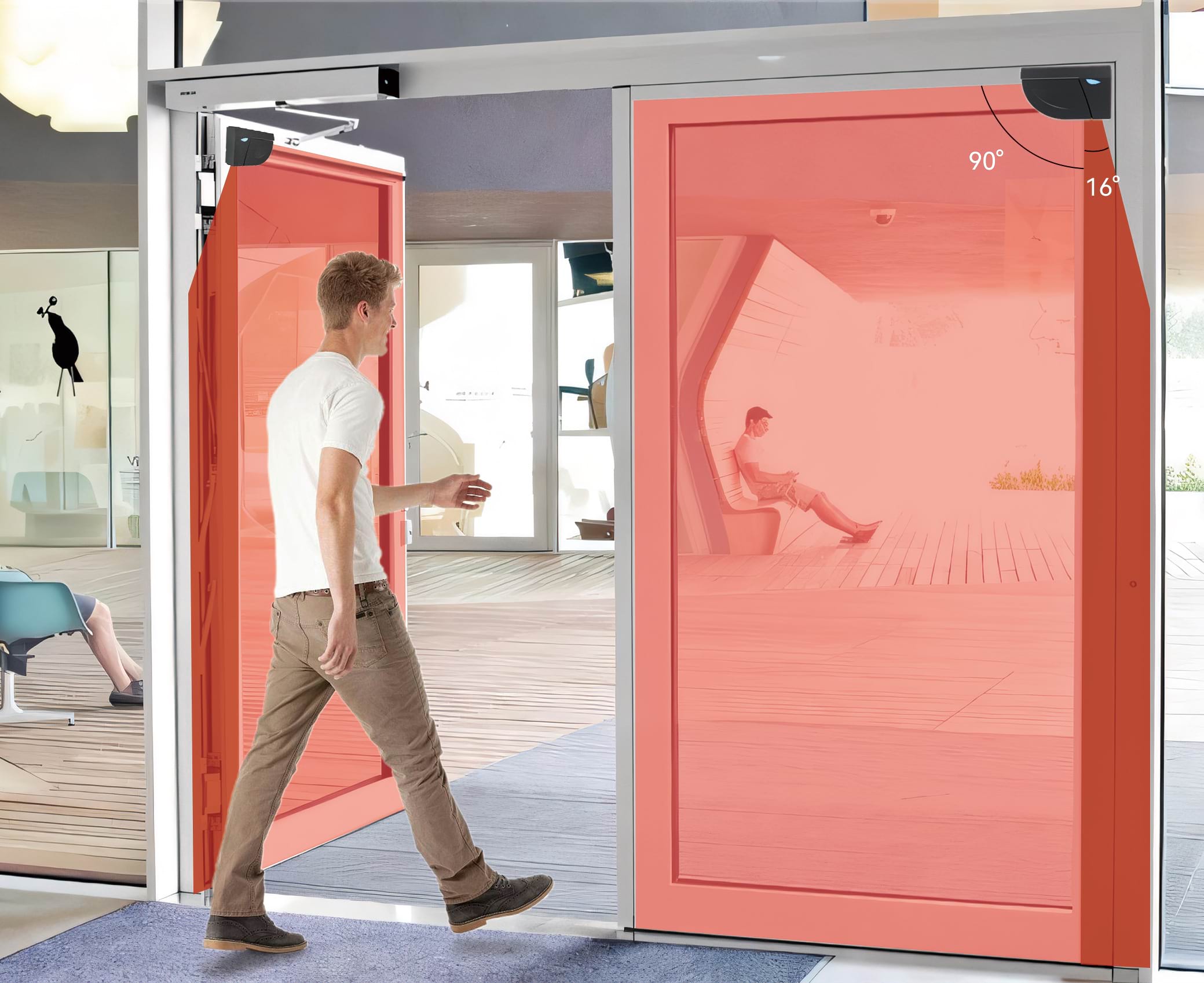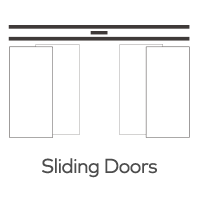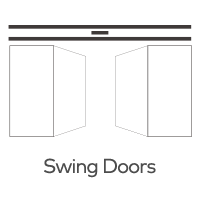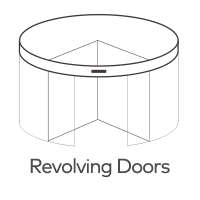What are the primary safety benefits of using laser sensors in automatic swing doors?
Automatic swing doors are a modern convenience in many high-traffic environments, such as hospitals, shopping malls, airports, and office buildings. These doors allow for smooth, hands-free entry and exit, making them highly efficient in busy spaces. However, with convenience comes the need for safety, as automatic doors can pose a risk of injury if they close on a person or object in their path.
Enter laser sensors—an advanced technology that enhances the safety of automatic swing doors. By providing more precise and reliable detection capabilities, laser sensors ensure that doors only move when it is safe to do so. In this article, we’ll explore the primary safety benefits of using laser sensors in automatic swing doors.

1. Enhanced Precision in Obstacle Detection
One of the most significant advantages of laser sensors over traditional infrared (IR) or mechanical sensors is their exceptional precision. Laser sensors work by emitting a laser beam that scans the area in front of the door, detecting any interruptions in the beam’s path. Unlike IR sensors, which detect temperature variations, laser sensors rely on light reflection, allowing them to pinpoint even small or partially obstructed objects.
This high level of accuracy makes laser sensors ideal for detecting a wide range of objects, including:
- People standing still or moving slowly through the doorway
- Strollers, shopping carts, or wheelchairs
- Bags, boxes, or other small obstacles
Laser sensors ensure that the door only operates when it is completely safe, reducing the likelihood of false triggers and minimizing the risk of injury.
2. Real-Time Detection for Immediate Response
Laser sensors offer real-time object detection, meaning that the system can instantly detect any obstruction in the door’s path and respond accordingly. This capability is especially important in fast-moving environments where people or objects may quickly move into the door's path.
When a laser sensor detects an obstruction, it sends an immediate signal to the door’s control system to either stop or reverse the door's movement, preventing it from closing on the object. This swift reaction helps avoid injuries and property damage, particularly in spaces with a high volume of foot traffic.
For example, in hospitals, where quick access is essential, laser sensors can ensure that doors open or remain open for patients and medical staff without the risk of sudden closures.
3. Minimized Risk of Injury
The primary function of laser sensors in automatic doors is to protect individuals from injury. Automatic swing doors can be hazardous if they close on someone, leading to bruises, cuts, or more serious injuries, especially if the person is caught between the door panels.
Laser sensors help eliminate this risk by immediately detecting any obstruction in the doorway and preventing the door from continuing its closing motion. In particular, laser sensors are highly effective in detecting:
- People with limited mobility
- Children or pets who may walk into the door's path unexpectedly
- Obstacles such as luggage or packages that might be left in the doorway
By stopping the door's movement as soon as an obstruction is detected, laser sensors reduce the potential for accidents and injuries.
4. Improved Detection in Low Visibility Conditions
Laser sensors offer a higher level of reliability in conditions where other sensors might struggle. For instance, in environments with low lighting, fog, or dust, infrared sensors may have difficulty detecting objects due to interference from environmental factors. Laser sensors, however, are less affected by such conditions, providing consistent and reliable detection regardless of the surrounding environment.
This makes laser sensors a more effective safety feature for automatic swing doors in a variety of settings, from hospital corridors with fluorescent lighting to airport terminals that may be busy and crowded. The ability to detect obstacles accurately in low visibility conditions ensures that the doors will only close when it is safe to do so, even in challenging environments.
5. Enhanced Compliance with Safety Standards
In many regions, the installation and maintenance of automatic doors are subject to strict safety regulations and standards. These regulations are designed to protect the public from accidents involving doors and other automated systems. Laser sensors help meet these safety standards by providing a reliable means of detecting obstructions and preventing accidents.
For example, the American with Disabilities Act (ADA) requires that automatic doors be safe for use by individuals with disabilities. Laser sensors can assist in ensuring that doors remain open long enough to accommodate individuals in wheelchairs, walkers, or other mobility aids, preventing accidental closures that could cause harm.
By integrating laser sensors, building owners and operators can ensure that their automatic doors remain compliant with both local and international safety standards.
6. Durability and Low Maintenance
Compared to traditional sensors, laser sensors are typically more durable and require less maintenance. Mechanical sensors or older infrared systems may wear out over time, especially in high-traffic environments where constant door movement and exposure to environmental factors can cause wear and tear.
Laser sensors, however, are less prone to physical damage and have no moving parts. They operate by emitting light waves, which means they’re less susceptible to dirt buildup or mechanical failure. Additionally, they do not require frequent recalibration or maintenance, making them a long-lasting, low-maintenance option for enhancing safety in automatic swing doors.
This durability not only improves the overall safety of the system but also reduces the need for costly repairs and replacements, making laser sensors a more cost-effective safety solution in the long run.
7. Flexibility and Adaptability
Laser sensors offer flexibility in how they are installed and configured, making them adaptable to a wide variety of automatic door types and environments. They can be used in both standard and custom door installations and can be adjusted to accommodate different door sizes, configurations, and traffic patterns.
For example, in buildings with high pedestrian traffic or specific safety requirements (e.g., hospitals or airports), laser sensors can be fine-tuned to provide optimal coverage and detection range. This flexibility ensures that the safety benefits of laser sensors can be maximized for any application, ensuring that automatic doors operate smoothly and safely in any setting.
Conclusion
Laser sensors are a vital safety feature for automatic swing doors, offering a range of benefits that help prevent accidents, injuries, and damage. From enhanced precision in detecting obstacles to real-time responses, laser sensors provide reliable protection for individuals and objects moving through doorways. Their ability to function in low visibility conditions, compliance with safety regulations, and durability make them a smart choice for any space where automatic swing doors are used.
By incorporating laser sensors into automatic swing doors, building owners and operators can ensure the safety of everyone who uses them, contributing to a safer and more accessible environment for all.







